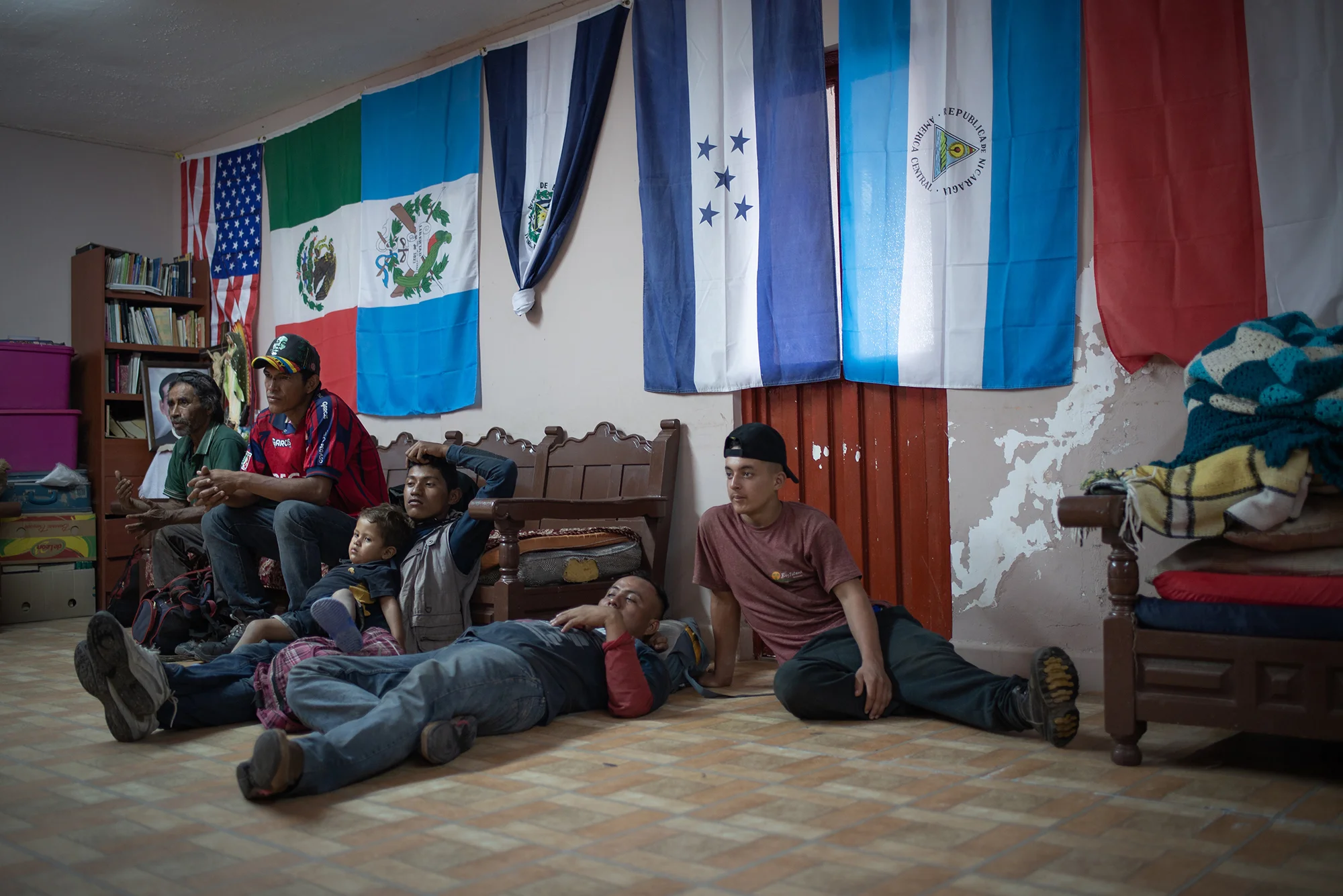
Migration Crisis at the US/Mexico Border • Luján Agusti
(Collaboration with Tamara Merino, text by Alice Driver)
In these photos, Tamara Merino and Luján Agusti capture how the migration crisis impacts daily life on both sides of the US-Mexico border. In one portrait, a single father from Honduras holds his two-year-old son while standing on the international bridge in Nuevo Laredo, Mexico. He explains that he hopes to request asylum in the US, his body erect, his eyes shining with tenderness and worry. In another, a father and son sit on a bed at a migrant shelter in Piedras Negras, Mexico. The priest who runs the shelter is worried that the two will be separated at the border when they request asylum. At a domestic violence shelter in Laredo, Texas, a young undocumented woman discusses how the father of her child, who beat her, threatened to have her deported without her children. The sheriff in Eagle Pass, Texas talks about how he works to uphold the law, but he also recognizes that immigrants do a lot of work in his community, everything from building houses to caring for children. Each of these relationships and moments reflects the complexity of the border and the lives and relationships that are intertwined on both sides.
The migrants who have made it to the international bridge in Nuevo Laredo, Mexico, several whom have traveled from as far away as Venezuela, are caught in limbo. They sleep on the bridge for days, waiting for officials on the US side to process their requests for asylum. They are caught between Mexico and the US, their fate held up by constantly changing immigration policies in the US. They don’t know if a wall will be built, if they will be separated from their children when they cross the border, if they will spend months or years in detention. But they hold out hope for a better future.
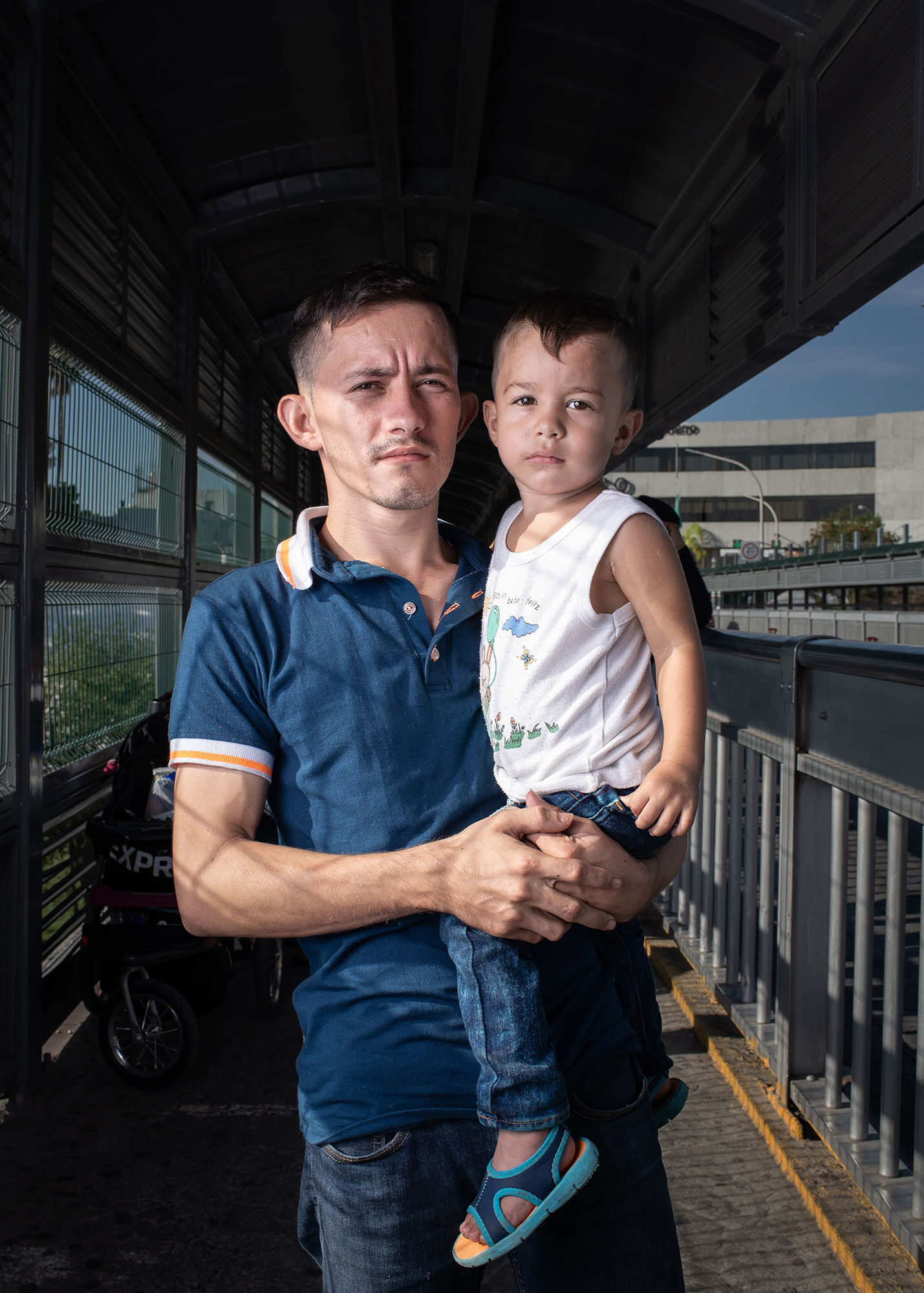
Portrait of Alfredo (26 years old) and his son Alex (1 year and 4 months), from Honduras at Laredo / Nuevo Laredo International Bridge. Alfredo decided to leave his homecountry due to the economic and social crisis it is facing. He approached the border to ask for asylum and start a new and better life. Laredo / Nuevo Laredo International Bridge. June 23rd, 2018. Photographer: Luján Agusti. (Model Release)
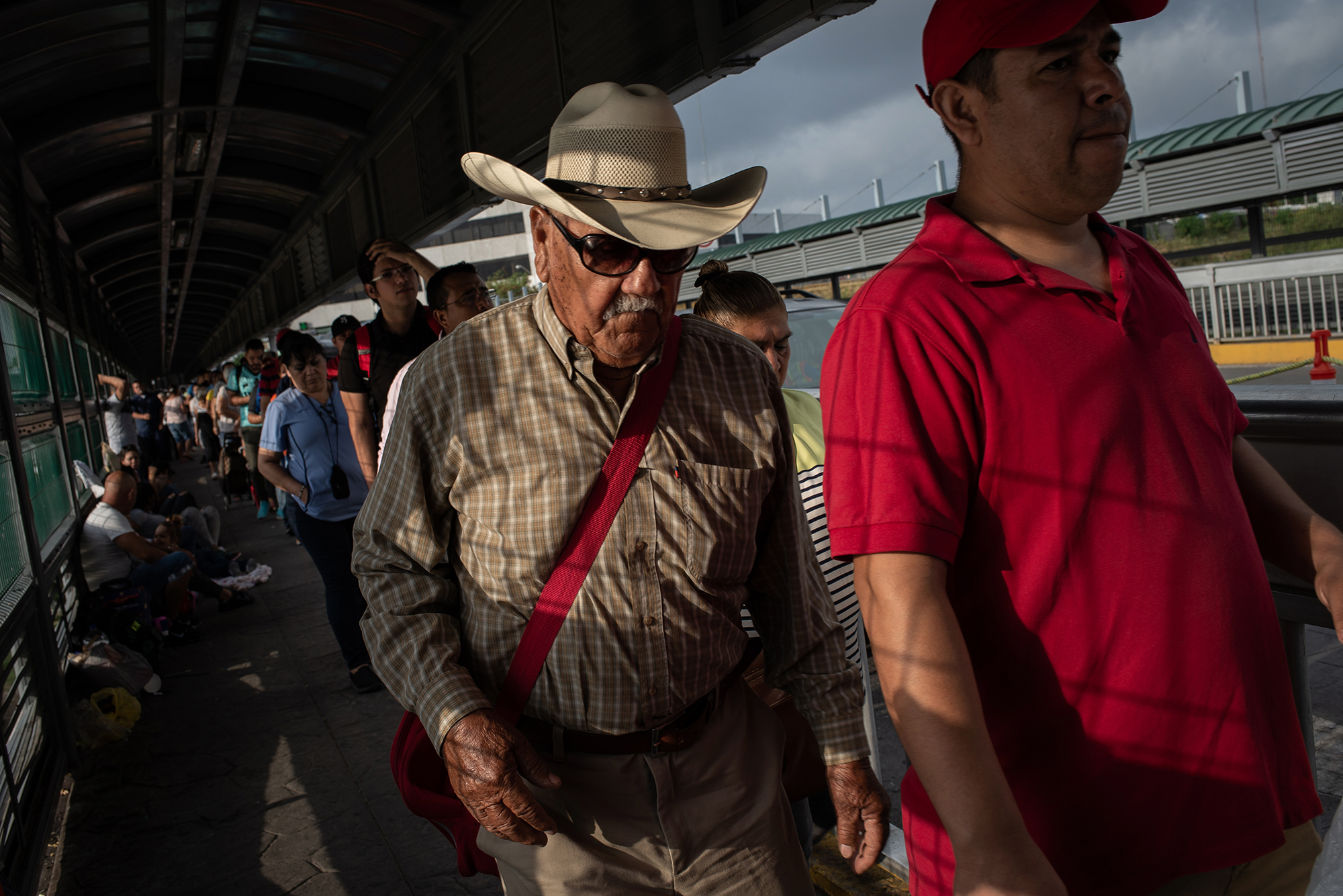
General view at Laredo / Nuevo Laredo International Bridge. June 25th, 2018. Photographer: Luján Agusti.
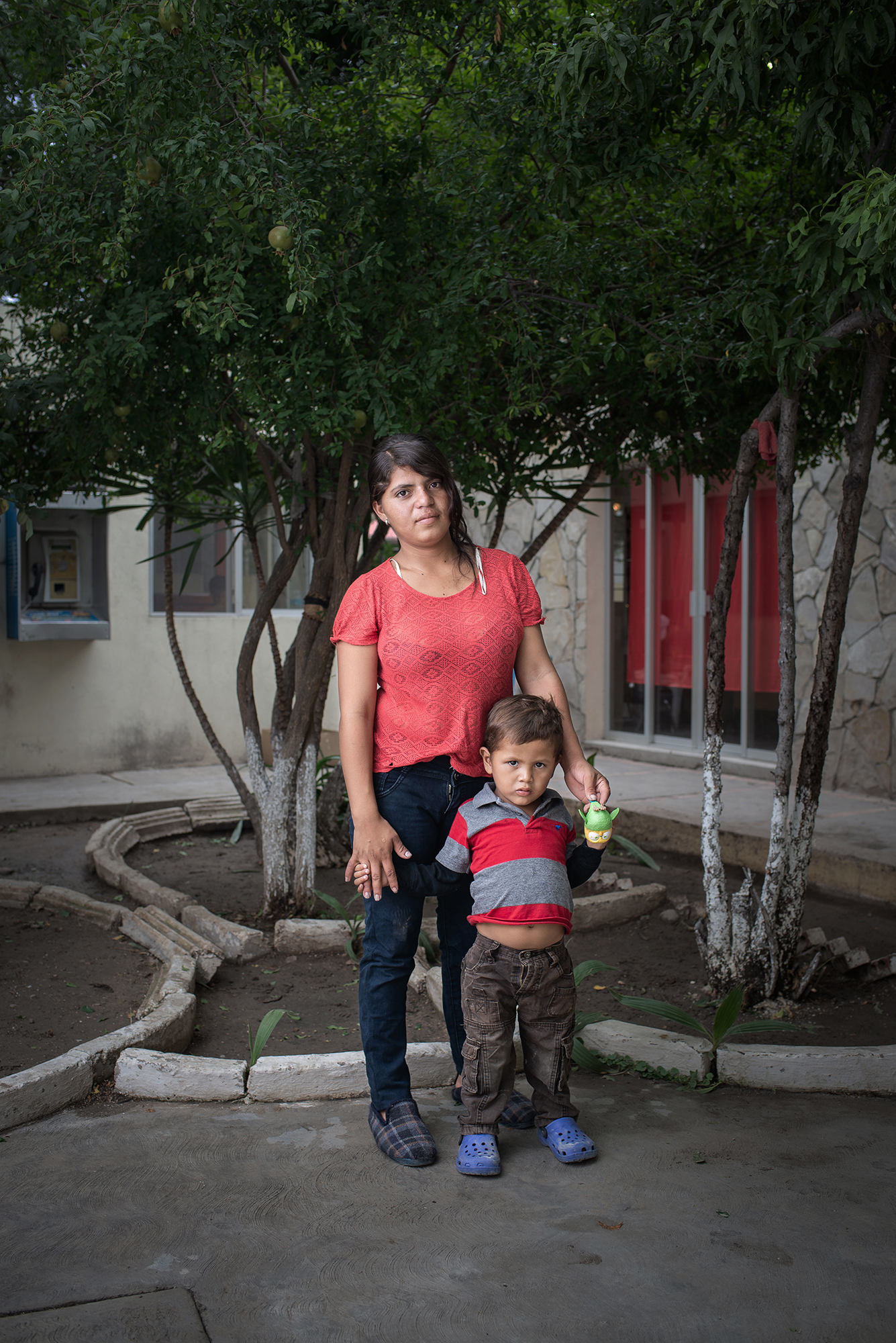
Portrait of Diana Marisol (19 years old) and her son Denis Jose (3 years old) at "Casa del Migrante Frontera Digna" created by priest Jose Guadalupe Valdes Alvarado. Diana left her homecountry Honduras due to the violent situation her country is facing; "I didn't want that future for my kid", she said. "Casa del Migrante Frontera Digna" was created to provide lodging for migrants from different countries who arrive after long journeys that last several months to cross into the United States. Immigrants can spend three nights in the shelter where they are offered beds, food, hygiene items and a space to regain strength. Piedras Negras, Coahuila, Mexico. June 21st, 2018. Photographer: Luján Agusti.
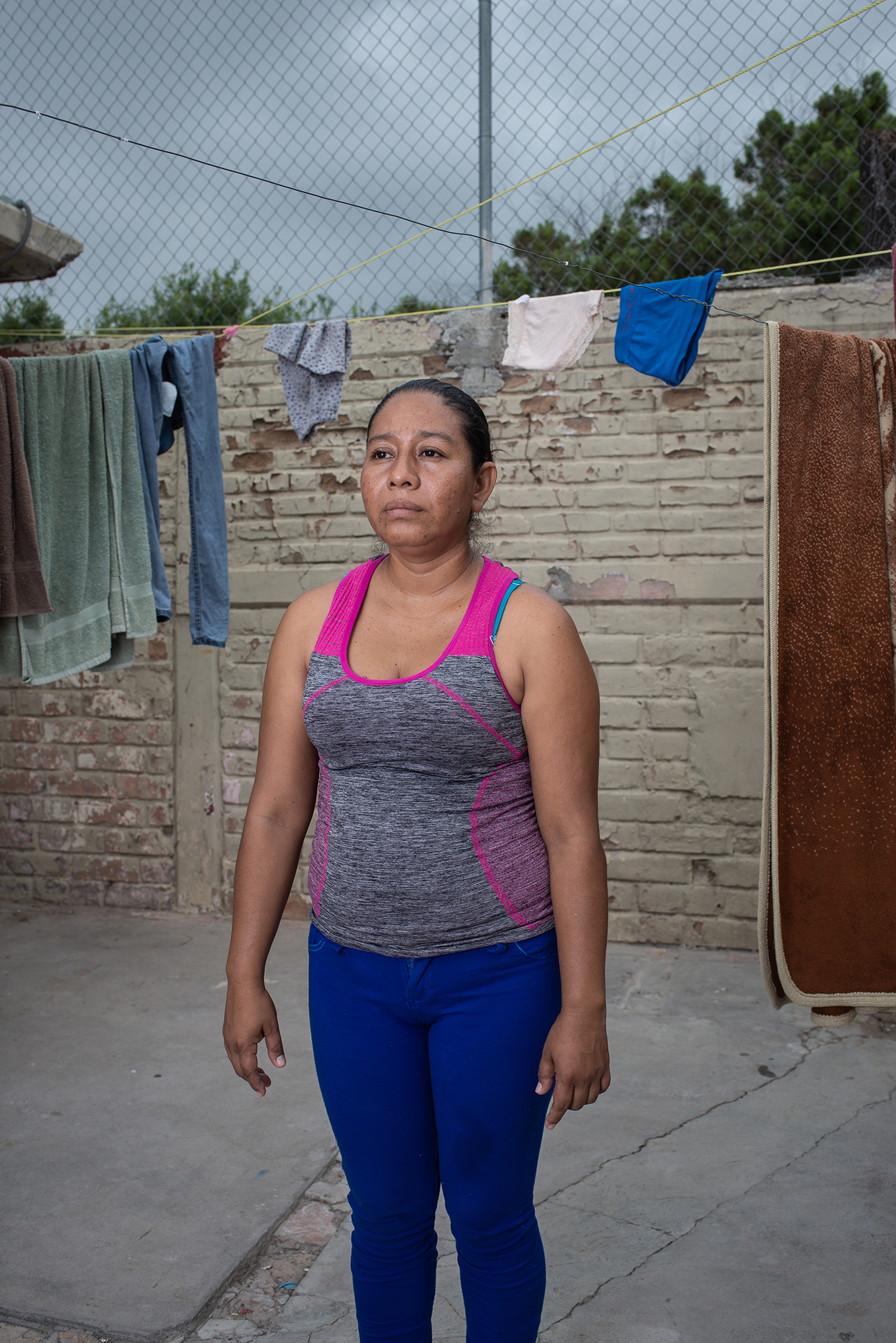
Portrait of Sara Ramos, from Guatemala. She left her homecountry one month ago, in the quest of a better life for her and her family. She had to leave her 4 children in Guatemala because she didn't want them to suffer, but she plans to go and look for them as soon as possible. "Casa del Migrante Frontera Digna" was created to provide lodging for migrants from different countries who arrive after long journeys that last several months to cross into the United States. Immigrants can spend three nights in the shelter where they are offered beds, food, hygiene items and a space to regain strength. Piedras Negras, Coahuila, Mexico. June 21st, 2018. Photographer: Luján Agusti.
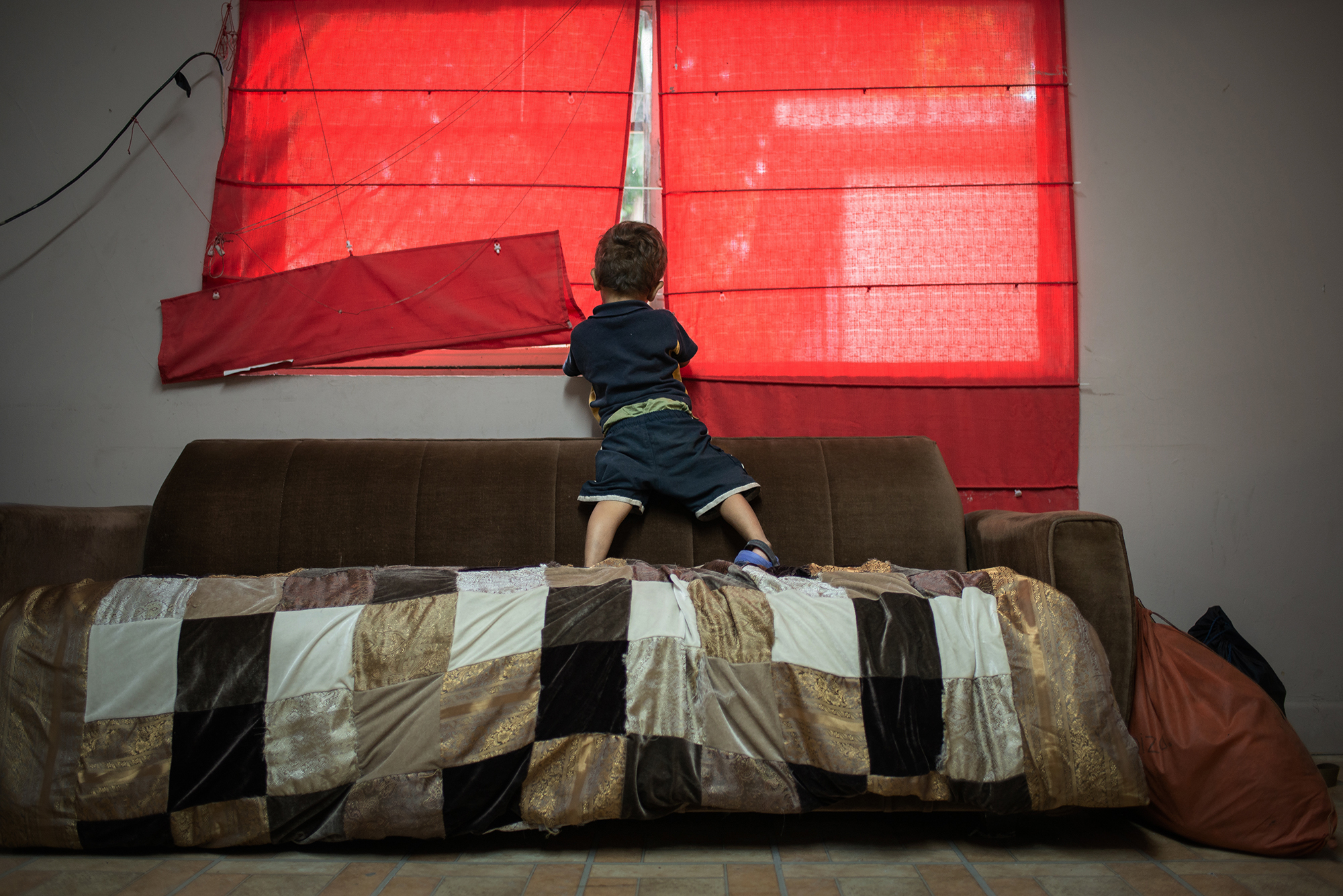
Denis Jose (3 years old), from Honduras looks through the window at "Casa del Migrante Frontera Digna" created by priest Jose Guadalupe Valdes Alvarado. Her mother Diana and him left their homecountry Honduras due to the violent situation her country is facing; "I didn't want that future for my kid", she said. "Casa del Migrante Frontera Digna" was created to provide lodging for migrants from different countries who arrive after long journeys that last several months to cross into the United States. Immigrants can spend three nights in the shelter where they are offered beds, food, hygiene items and a space to regain strength. Piedras Negras, Coahuila, Mexico. June 21st, 2018. Photographer: Luján Agusti.
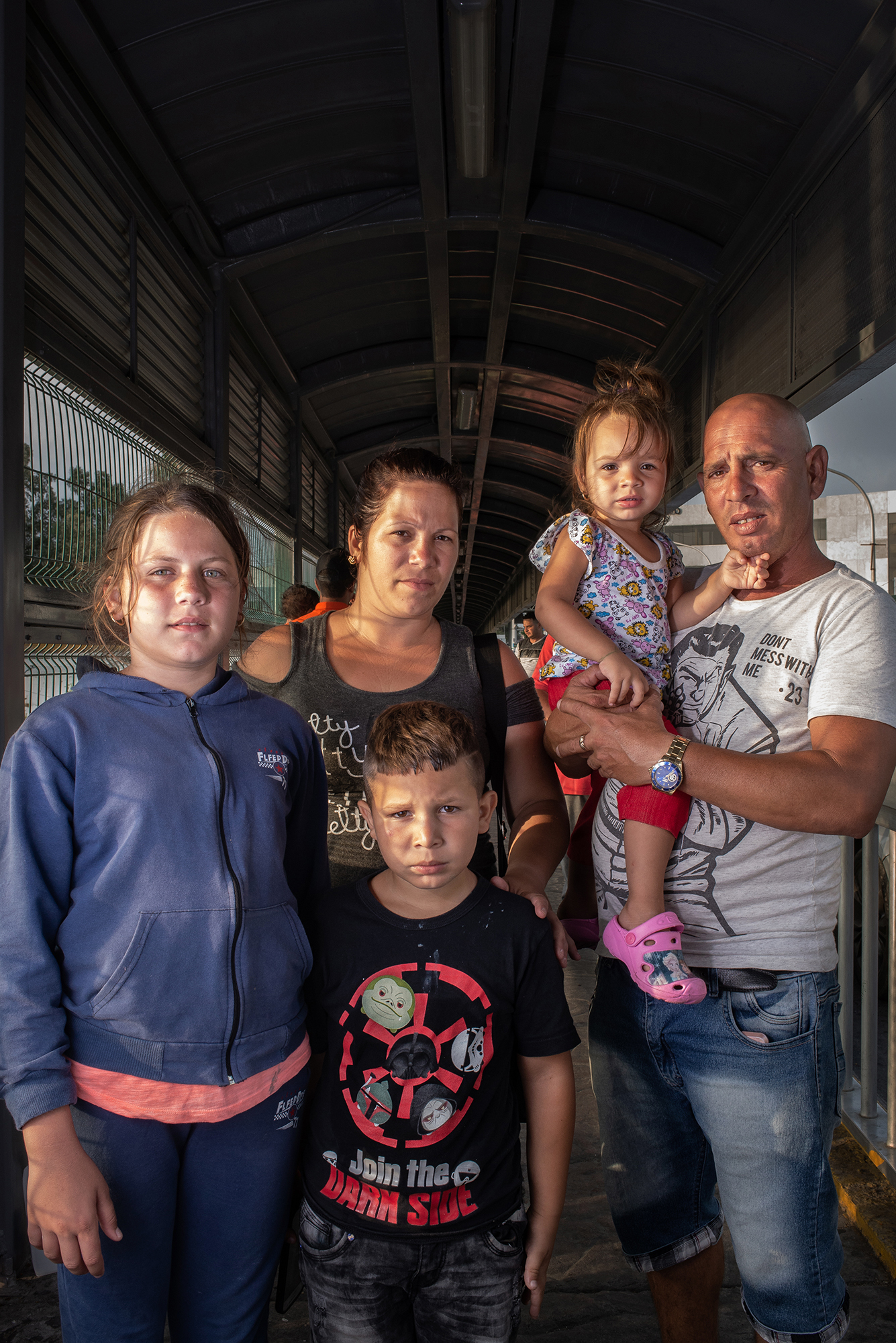
Portrait of Lorena (12), Laurel (31), Raydel (7), Yarena (2), and Raydel (45), from Cuba at Laredo / Nuevo Laredo International Bridge. They decided to leave their homecountry due to the economic and social crisis. They approached the border to ask for asylum and start a new and better life. Laredo / Nuevo Laredo International Bridge. June 25th, 2018. Photographer: Luján Agusti.

A group of migrants hangs out and watches TV at "Casa del Migrante Frontera Digna" created by priest Jose Guadalupe Valdes Alvarado. "Casa del Migrante Frontera Digna" was created to provide lodging for migrants from different countries who arrive after long journeys that last several months to cross into the United States. Immigrants can spend three nights in the shelter where they are offered beds, food, hygiene items and a space to regain strength. Piedras Negras, Coahuila, Mexico. June 21st, 2018. Photographer: Luján Agusti.
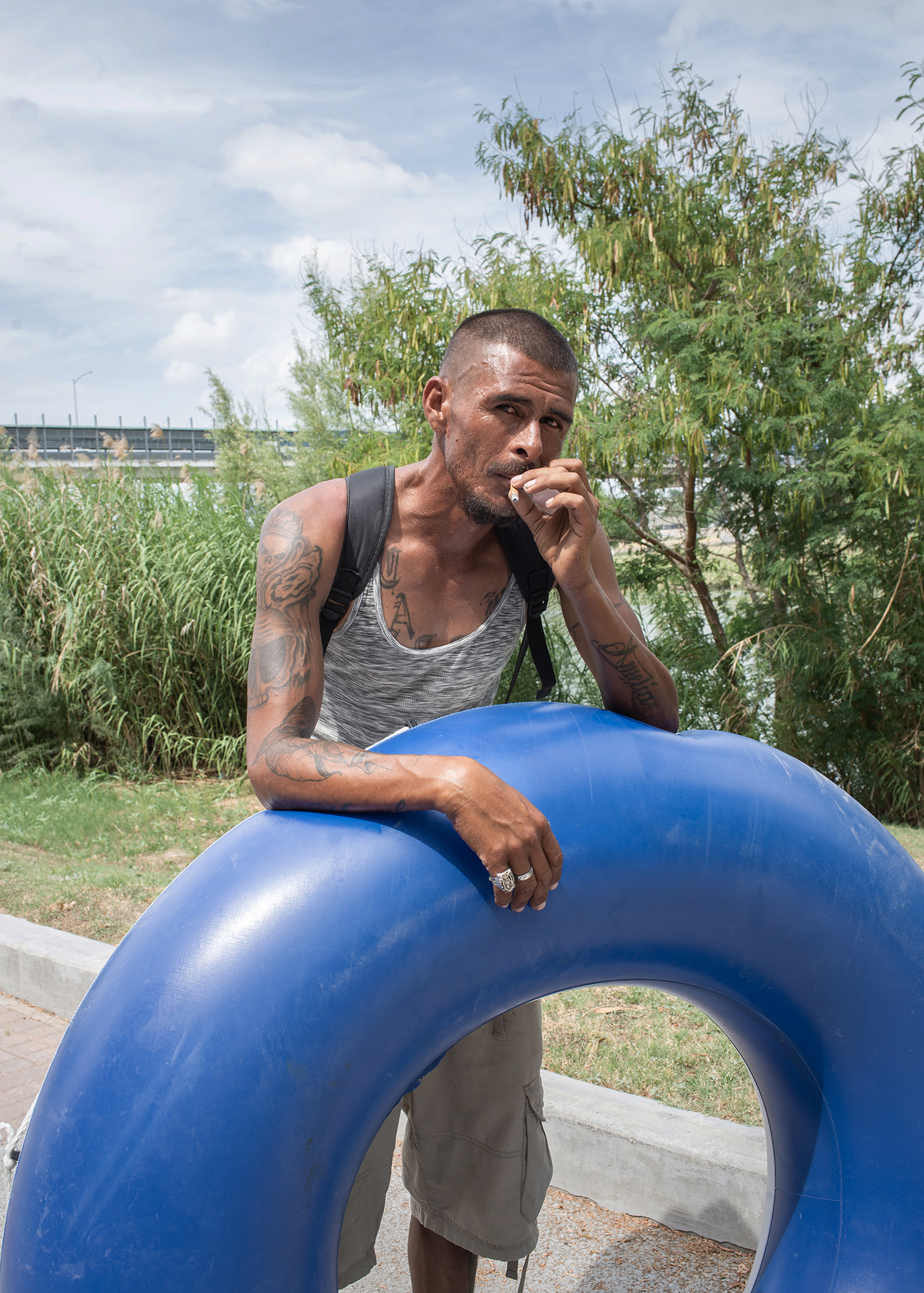
Portrait of Manuel, who affirms to be willing to cross the river with his inner tube. This person is most likely a "Coyote" (someone who charges for helping migrants cross). Rio Grande is known for being a natural border between Mexico and the United States, and for which many people submerge to reach the United States, escaping the violence and bad economic situation of their countries. Piedras Negras, Coahuila, Mexico. June 21st, 2018. Photographer: Luján Agusti.
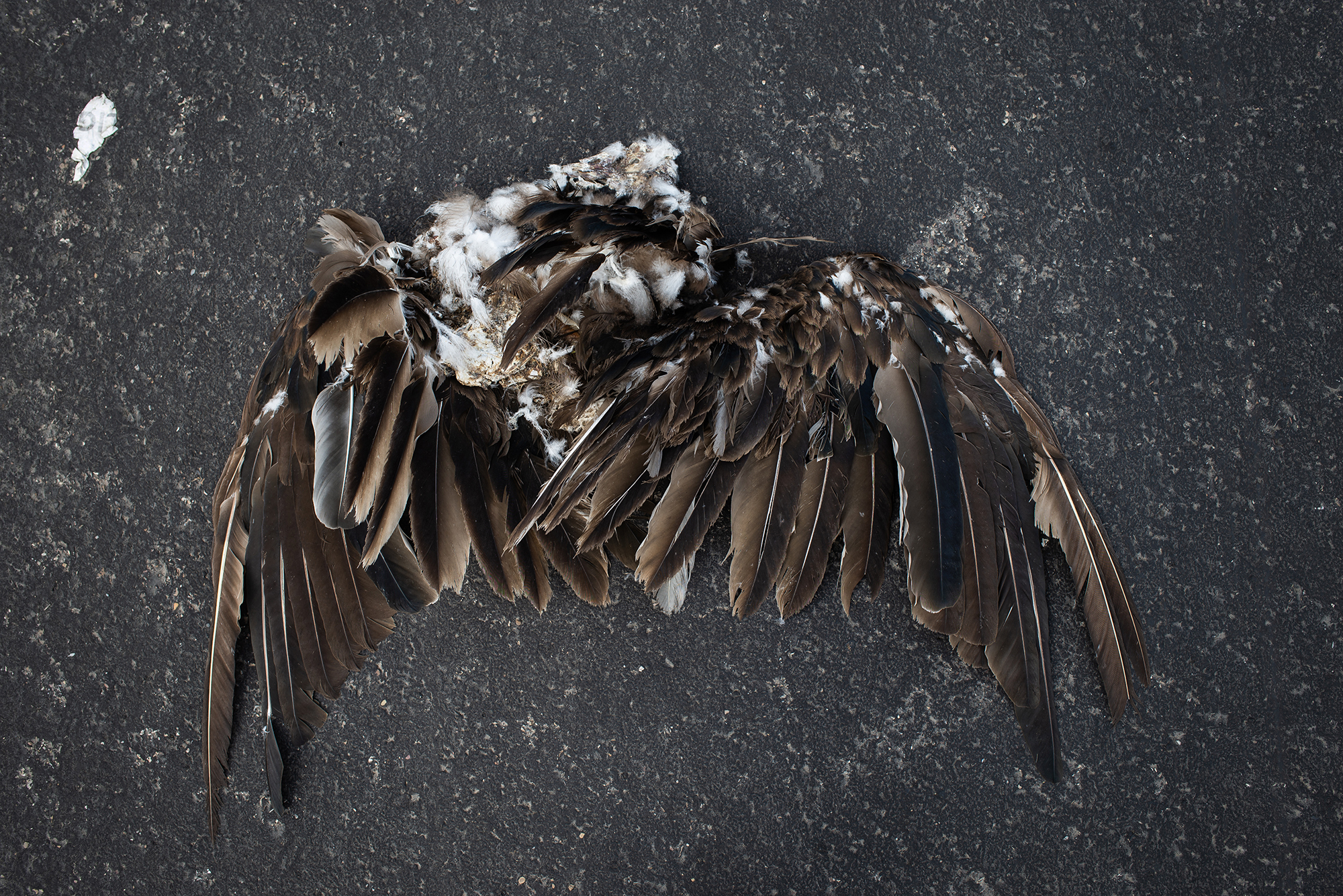
Detail of a dead eagle. The Rio Grande is well known for being a natural border between Mexico and United States, and to which many people submerge to reach the United States illegally, escaping the violence and bad economic situation of their countries. Eagle Pass, Texas, United States. June 21st, 2018. Photographer: Luján Agusti.
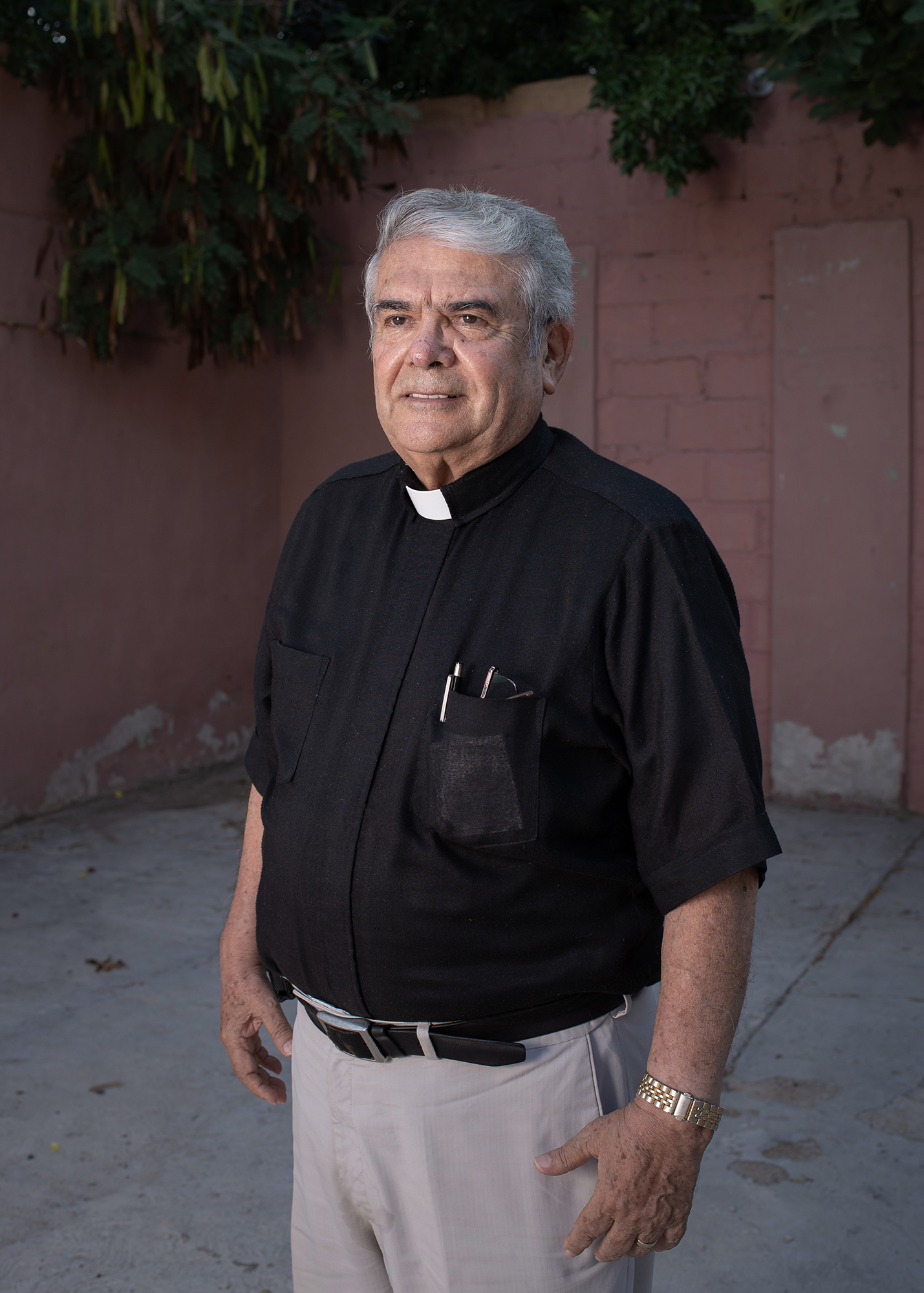
Portrait of priest Jose Guadalupe Valdes Alvarado, creator of "Casa del Migrante Frontera Digna" and the dining room for migrants. The priest has a strong commitment helping people who arrive at Piedras Negras after a hard road with the intention of crossing to the United States in search of a better life. Piedras Negras, Coahuila, Mexico. June 22nd, 2018. Photographer: Luján Agusti.
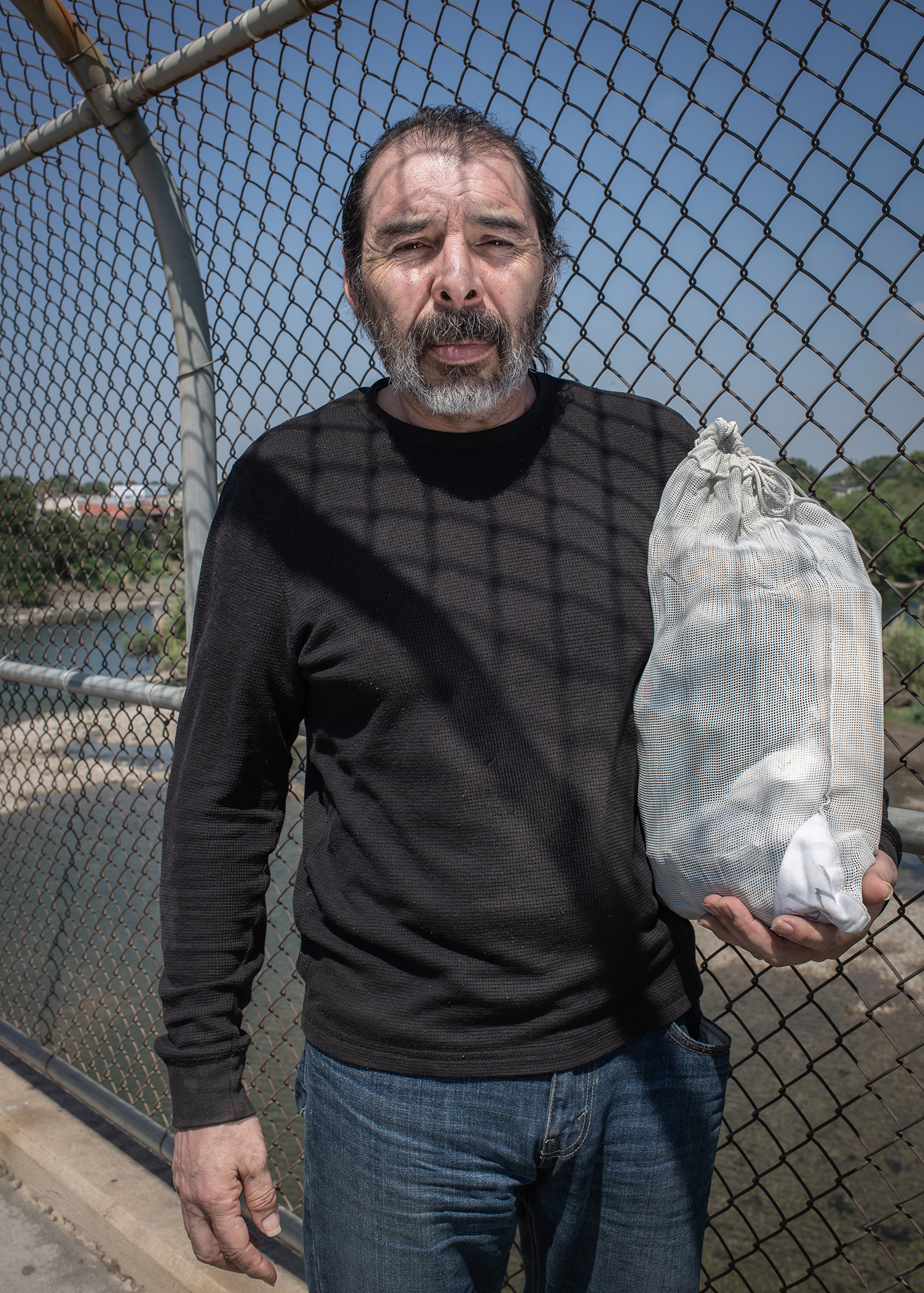
Portrait of Jesus Aragones Varal (52 years old) while crossing the Del Río / Ciudad Acuña International Bridge after being deported. He had lived 19 years old in the United States, and had to leave his wife and son behind. Every Saturday morning a bus arrives carrying a group of deportees who were arrested and who are escorted to the Mexican side. Del Río / Ciudad Acuña International Bridge. June 23nd, 2018. Photographer: Luján Agusti.
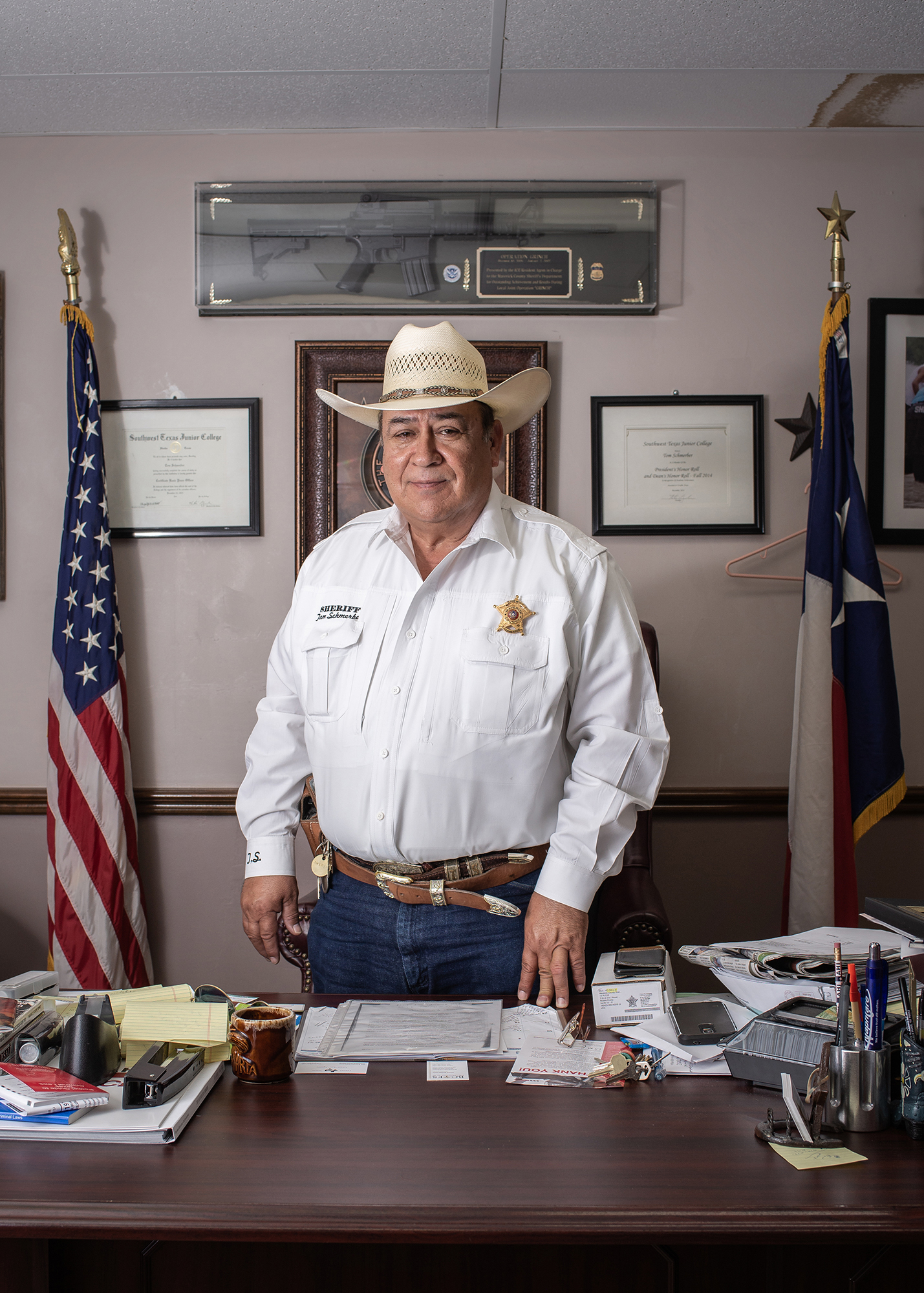
Portrait of Maverick County Sheriff Tom Schmerber. Sheriff Schmerber presents himself against Trump's measures against immigrants and declares "Maybe they are just looking for a better life." Eagle Pass, Texas, United States. June 22nd, 2018. Photographer: Luján Agusti.
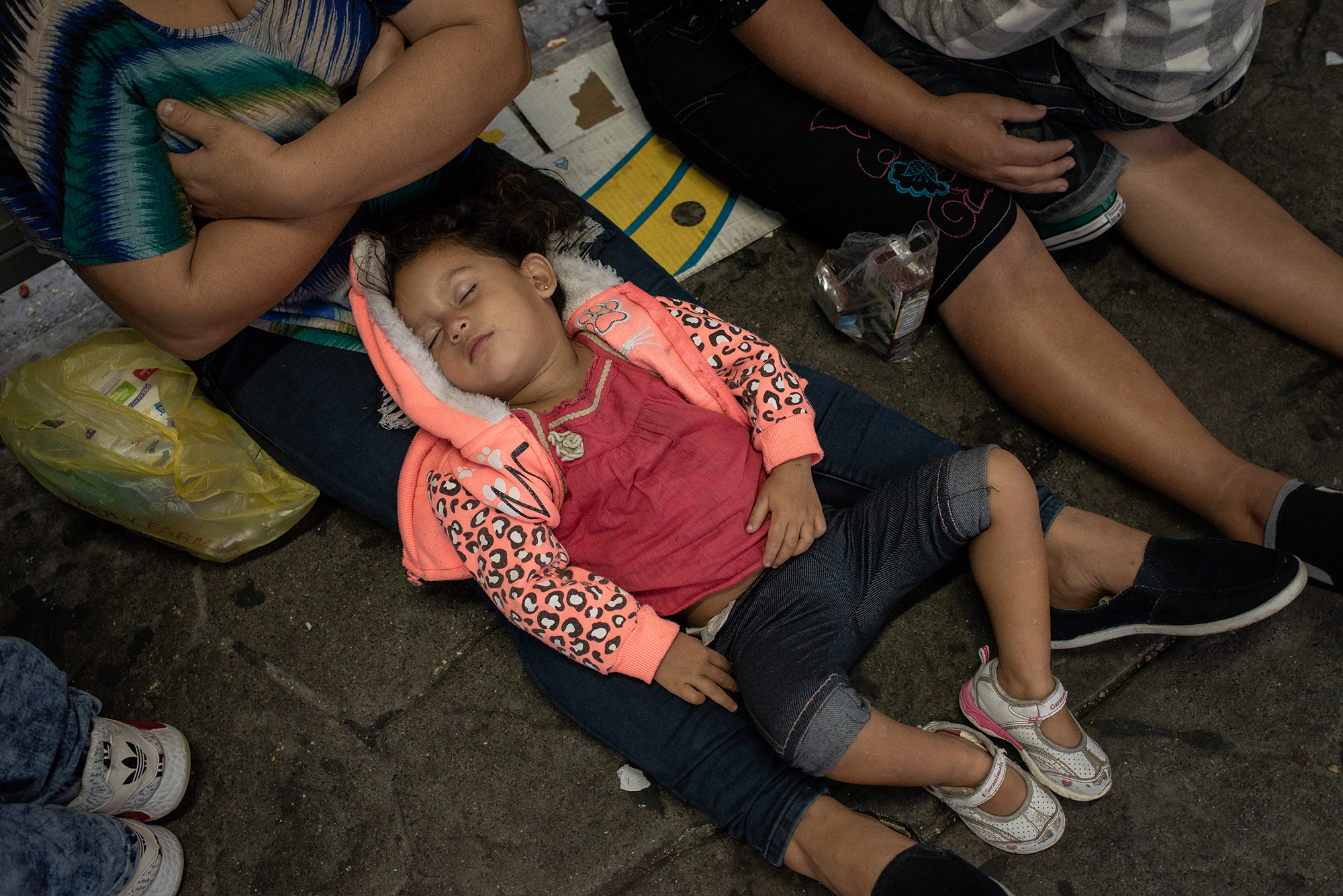
A baby sleeps in the row of the Laredo / Nuevo Laredo International Bridge. Every day a large number of people from different countries come to the border to ask for asylum. They usually spend one or two nights waiting for their turn to be taken care of. Most of them trust that the US government will help them. Laredo / Nuevo Laredo International Bridge. June 25th, 2018. Photographer: Luján Agusti.
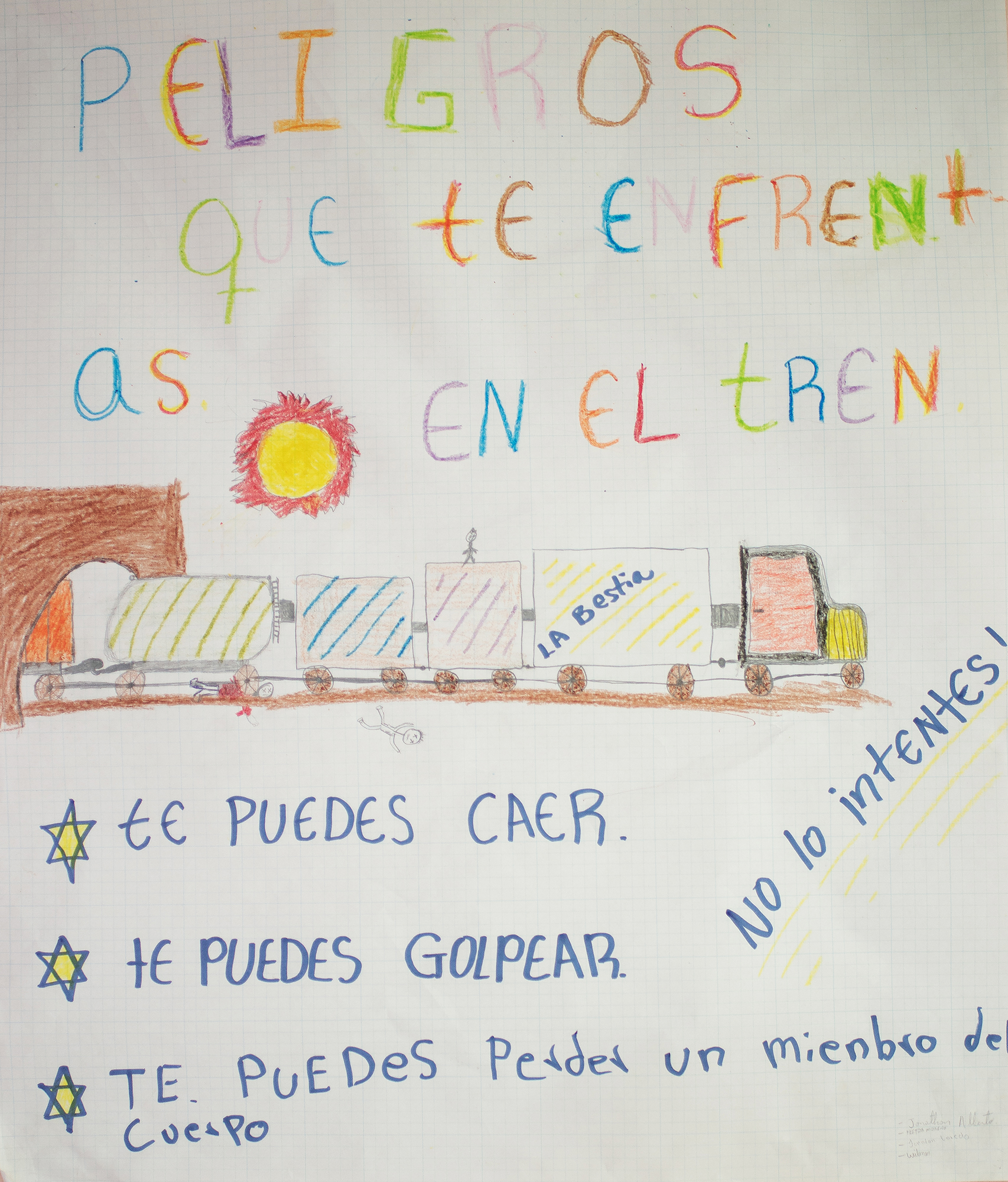
Drawing that can be found in the CAMEF (Border Minors Service Center) about the dangers of traveling on the Train The Beast. It reads: "hazards you face on the train: you can fall, you can get hit, you can loose a part of your body. Do not try.". The purpose of CAMEF is to offer 24-hour assistance to migrant or repatriated children, providing shelter, food, medical care and other supports. Nuevo Laredo, Tamaulipas, Mexico. June 24rd, 2018. Photographer: Luján Agusti.
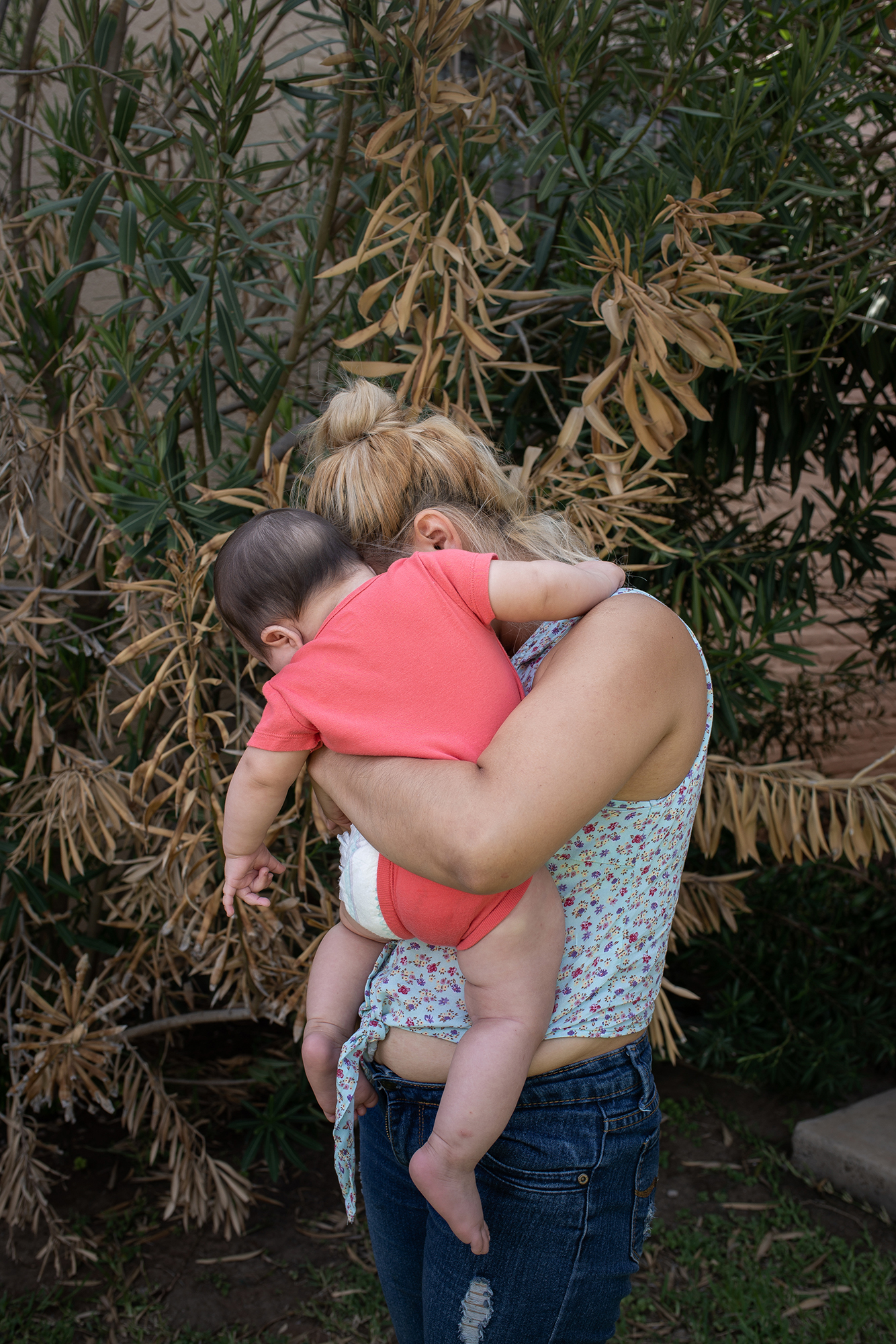
Portrait of Vanessa - the name she chooses not to reveal her identity - with her baby. She is a guest at Casa de la Misericordia who arrived with her daughters after being a victim of domestic violence. Vanessa is an immigrant and does not have her papers yet. Casa de la Misericordia provides a safe place where victims of domestic violence can be oriented, educated on domestic violence and where emotional support is provided. Casa de Misericordia also links victims to appropriate agencies based on their needs and goals. Laredo, Texas, US. June 25th, 2018. Photographer: Luján Agusti.
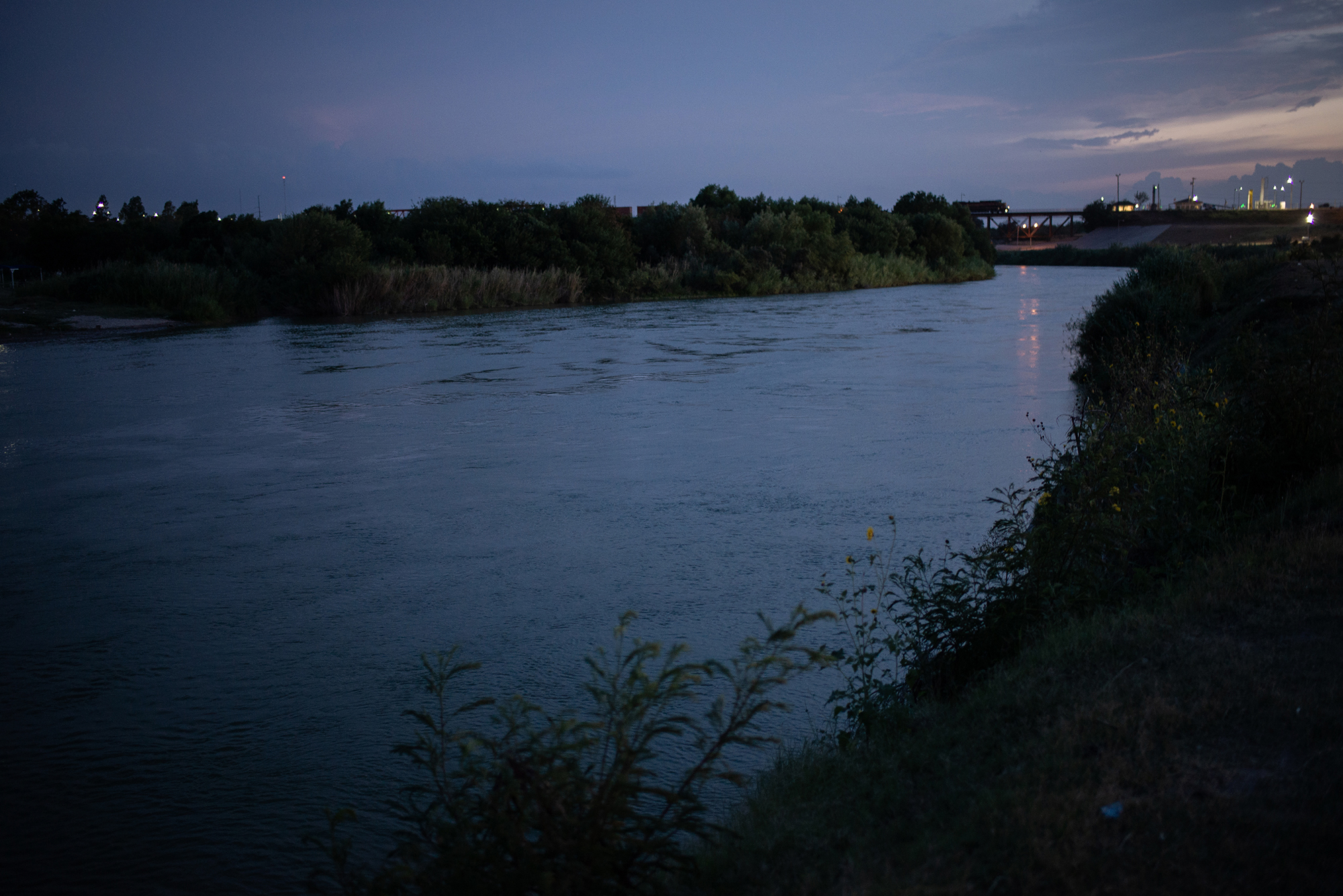
Night view of the Rio Grande that separates the United States from Mexico. This river is well known for being a natural border, and to which many people submerge to reach the United States, escaping the violence and bad economic situation in their countries. Laredo, Texas, US. June 25th, 2018. Photographer: Luján Agusti.
PROJECTS
Migration Crisis at the US/Mexico Border
Collaboration By Luján Agusti and Tamara Merino; text by Alice Driver
In these photos, Tamara Merino and Luján Agusti capture how the migration crisis impacts daily life on both sides of the US-Mexico border. In one portrait, a single father from Honduras holds his two-year-old son while standing on the international bridge in Nuevo Laredo, Mexico. He explains that he hopes to request asylum in the US, his body erect, his eyes shining with tenderness and worry. In another, a father and son sit on a bed at a migrant shelter in Piedras Negras, Mexico. The priest who runs the shelter is worried that the two will be separated at the border when they request asylum. At a domestic violence shelter in Laredo, Texas, a young undocumented woman discusses how the father of her child, who beat her, threatened to have her deported without her children. The sheriff in Eagle Pass, Texas talks about how he works to uphold the law, but he also recognizes that immigrants do a lot of work in his community, everything from building houses to caring for children. Each of these relationships and moments reflects the complexity of the border and the lives and relationships that are intertwined on both sides.
The migrants who have made it to the international bridge in Nuevo Laredo, Mexico, several whom have traveled from as far away as Venezuela, are caught in limbo. They sleep on the bridge for days, waiting for officials on the US side to process their requests for asylum. They are caught between Mexico and the US, their fate held up by constantly changing immigration policies in the US. They don’t know if a wall will be built, if they will be separated from their children when they cross the border, if they will spend months or years in detention. But they hold out hope for a better future.
Publications
Scenes From a Migration Crisis–On Both Sides of the Border, National Geographic
